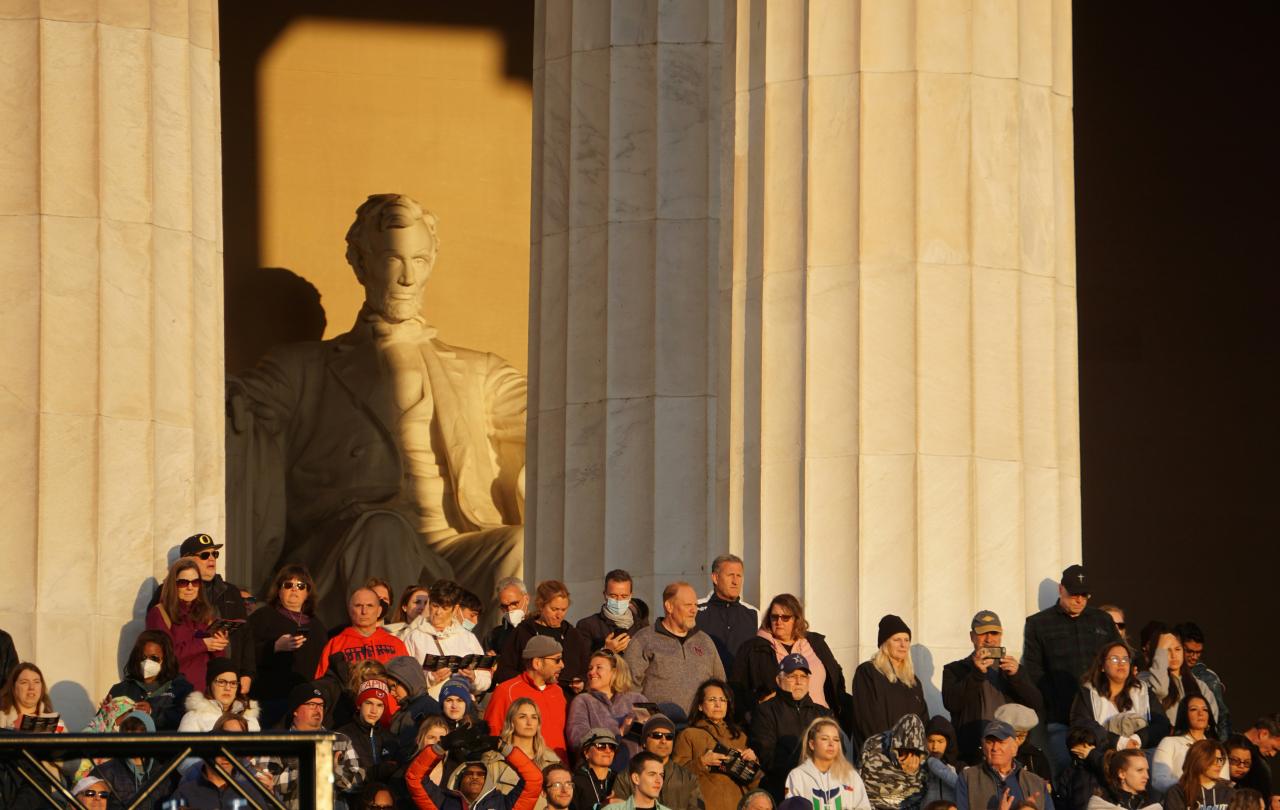
When was the last time a brilliant piece of rhetoric made the headlines?
“Empty rhetoric.”
“Form over function.”
“Sloganeering.”
These—and other accolades—are stock trade when it comes to the art of denouncing public discourse. Red flags are rightly waved in the face of baseless claims and insincere promises. Scroll through a news reel; open a newspaper: language far stronger in style than in substance is not hard to find.
Nowadays we are sensitive to these kinds of abuses of public platforms. When Donald Trump speaks of the ‘Great Big Beautiful Bill’ or Elon Musk of the ‘Big Ugly Bill’ we know the cogs at BBC Verify are likely to be turning. Fact-checking is an established trade.
Sometimes political turns of phrase are just careless, inadequately thought through. Granted, a politician’s public address is often put together at a pace. Time is so remarkably tight that phrasing and formulations are not interrogated as fully as they might be. (Krish Kandiah recently picked up the Prime Minister’s “island of strangers” line and its unfortunate resonance)
But of course, the critiques I’ve listed above are themselves sharply rhetorical. They are punchy. Not drawn-out logical deductions. They aim to make us sit upright and win us over. Or move us to a course of action.
So: is rhetoric the problem? No. Its misuse is the problem. This isn’t always clear. And it’s the reason why simply decrying “rhetoric” won’t get us very far.
I am sympathetic to the suspicion. When efficiency and pragmatism tower high among the canons of public discourse, it is easier to trade in polarising x versus y expressions. Being guarded in the face of such potent idiom is understandable.
And yet the most remarkable public discourses in human history have been rich in rhetoric.
Martin Luther King at the Lincoln Memorial: “I have a dream.”
Churchill in the House of Commons: “we shall fight them on the beaches.”
Lincoln’s Gettysburg address: “government of the people, by the people, for the people.”
All these speakers knew that bare understanding doesn’t typically move people to action. An impassioned speech, a plea to respond, or beautifully woven prose often serve as the tipping point for social engagement.
Which leads me to wonder, what if a suspicion of smart speech-making ends up stunting social engagement, rather than fostering it? Perhaps political discourse today has gone too far; perhaps rhetoric is beyond repair. And yet: abuse doesn’t mean there isn’t proper use. There is a better way.
When persuasive powers are uncoupled from sound argument, then rhetoric obscures understanding and has become irresponsible.
In the classical era, training in rhetoric was a prominent feature of an education. You might say it was the way to avoid the charge: “All substance, no style”. It was about turning a sound argument into an art form. For Aristotle, rhetoric was about making use of the tools of persuasion—substance with style. But skill in persuasion was not a virtue of itself; it never stood alone. As Roger Standing has reminded us, “the function of rhetorical skills was not to persuade in and of themselves.” Indeed, training in rhetoric was training in responsibility.
In his classic 1950s text Ethics of Rhetoric, Richard Weaver put his finger on this. He highlighted that “rhetoric passes from mere scientific demonstration of an idea to its relation to prudential conduct.” True rhetoric, then, is this: the art of lighting up the path that leads from sound logic to good action.
Today, it seems that when it comes to the rules of rhetoric, communicators are answerable to polls and popularity. These ends justify the means, which makes fancy formulations fair game. If style secures votes, then it’s a good job done. But this means the communicator has no real accountability for his or her language. Pragmatism is in the driving seat. In a sense, responsibility has been handed over to the hearer.
This is problematic. When persuasive powers are uncoupled from sound argument, then rhetoric obscures understanding and has become irresponsible. Language is no longer illuminating, but misleading. It is trading on falsehood, or perhaps half-truths, instead of magnifying what is true for the sake of what is good.
Take an example. In the recent parliamentary debate over amendments to the assisted dying bill, the proceedings opened with the claim that “if we do not vote to change the law, we are essentially saying that the status quo is acceptable.” I don’t for a moment doubt the good intent in this claim—securing the most compassionate care possible for terminally ill adults. But let it be said: no, those who do not advocate assisted dying are not “essentially” saying this. This claim is a non sequitur: the conclusion does not follow the premise. It is logically unsound.
Like many tools, the art of persuasion can be wielded carelessly; sometimes maliciously. But rhetoric-free public discourse would make for a colourless and lifeless thing indeed. What we need now is rhetoric that is responsible—responsible to what is true and responsible to good outcomes. These should not be split; as soon as they are, speech-making becomes sterile or hollow. I recently heard the neat phrase: “Some people reach your mind by going through the heart, and some people reach your heart by going through your mind.” Yes, as the Christian faith has always maintained: mind and heart belong together. Give us words that awaken both, like those once spoken by that obscure wandering rabbi, Jesus of Nazareth, in one of the most studied and penetrating speeches in human history:
Blessed are the poor in spirit, for theirs is the kingdom of heaven.
Blessed are those who mourn, for they will be comforted.
Blessed are the meek, for they will inherit the earth.
Blessed are those who hunger and thirst for righteousness, for they will be filled.
I pray for public discourse brimming with both substance and style. It might help lead us to better things.
Support Seen & Unseen
Since Spring 2023, our readers have enjoyed over 1,500 articles. All for free.
This is made possible through the generosity of our amazing community of supporters.
If you enjoy Seen & Unseen, would you consider making a gift towards our work?
Do so by joining Behind The Seen. Alongside other benefits, you’ll receive an extra fortnightly email from me sharing my reading and reflections on the ideas that are shaping our times.
Graham Tomlin
Editor-in-Chief





